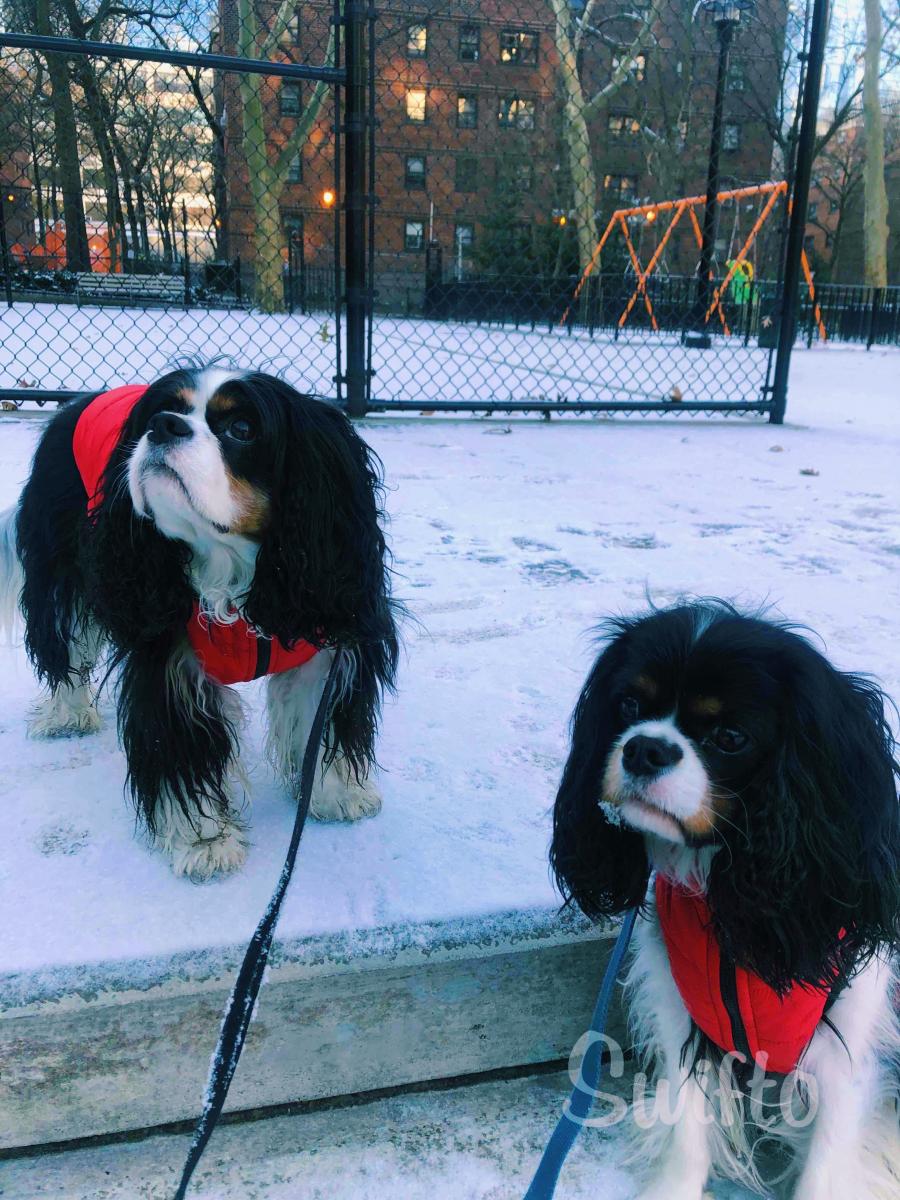When we think of our dogs, one of the first things that comes to mind is their fur. Our warm, furry friends leave sprinkles of love behind that cover our clothing and floor, reminding us that our beloved pets are never far away. We credit that wonderful fur with keeping our dogs warm, but even fur does not make a dog immune to the cold. Yes, even our warm friends can feel the cold and it is our job to make notice the signs and take action when necessary.
Yes, not all dogs react to the cold in the same way. Dogs with thick fur and that were bred for wintery climates are more likely to enjoy cold weather and snow. These breeds include the Akita, the Tibetan Terrier, the Siberian Husky, the Alaskan Malamute, the Chow Chow, the Saint Bernard, the Tibetan Mastiff, and the Newfoundland. Smaller dogs, those with thin coats, and those with less body fat are not built to withstand harsh winter conditions. These breeds include the Chihuahua, the Greyhound, the Miniature Pinscher, the Whippet, the Rat Terrier, the Yorkshire Terrier, the Great Dane, and the Weimaraner. Even if your dog does not fall into this category, it is still very important to make sure he or she stays warm!
When any warm-blooded creature gets cold, the muscles tremble in an effort to raise the body heat. Dogs are no exception, and one of the main signs of a cold dog is trembling, shaking, and shivering in an attempt to warm the body. A dog may also tuck his or her extremities closer to the heat of the torso, keeping the tail and legs tucked under and ears pinned back against the head. If you are on cold ground, your dog may lift his or her paws constantly and be unable to put the full weight on all four paws. Another obvious sign is the strong desire to return to a warm environment. If your dog quickly returns to a door that leads to warmth such as a car door or a house door, it’s his or her way of telling you that the cold is too uncomfortable. Moving slowly, laying down, yawning, and other signs of being tired can also be signs of being cold. When a dog is too cold, he or she may become listless and move slowly to try and preserve body heat. The nose can be a tell-tale sign if it is excessively cold outside. Feel if the nose is colder than normal and see if ice is sticking to or forming on the nose. Check out our post "Walking Your Dog In The Snow” for more information about what you can do to keep your dog safe in a snowy climate.
You never want your dog to become too cold, so if you notice any of the signs above, it’s time to go inside. During the cold winter months, you can do your part to keep your dog warm both indoors and outdoors. Make sure your home has a place for your dog to get warm in peace, such as a bed or a corner of a room with cushions. A blanket or towel just for your dog can also provide warmth and comfort when he or she needs to warm up. Waiting longer between fur trimmings will also provide warmth as the longer, thicker fur will preserve body heat. It might also be a good idea to feed your dog a little bit more during the winter. Always consult your vet if your dog has a weight issue or any digestive problems, but a little extra food will provide energy and aid in the healthy fat layer underneath the fur. Warmth can even come in the form of a sweater or jacket made just for a chilly dog! It will take some getting used to, but many dogs appreciate the warmth of a sweater when the weather gets cold. Take a look at our post “Walking Your Dog In The Snow” for more information.
Using your best judgment and knowing when to warm up will keep your dog happy and avoid winter illnesses. Even though our dogs have more advantages against the cold, it is important to remember that they are not immune to it.
Looking to book a dog walk?
By Callie T.


